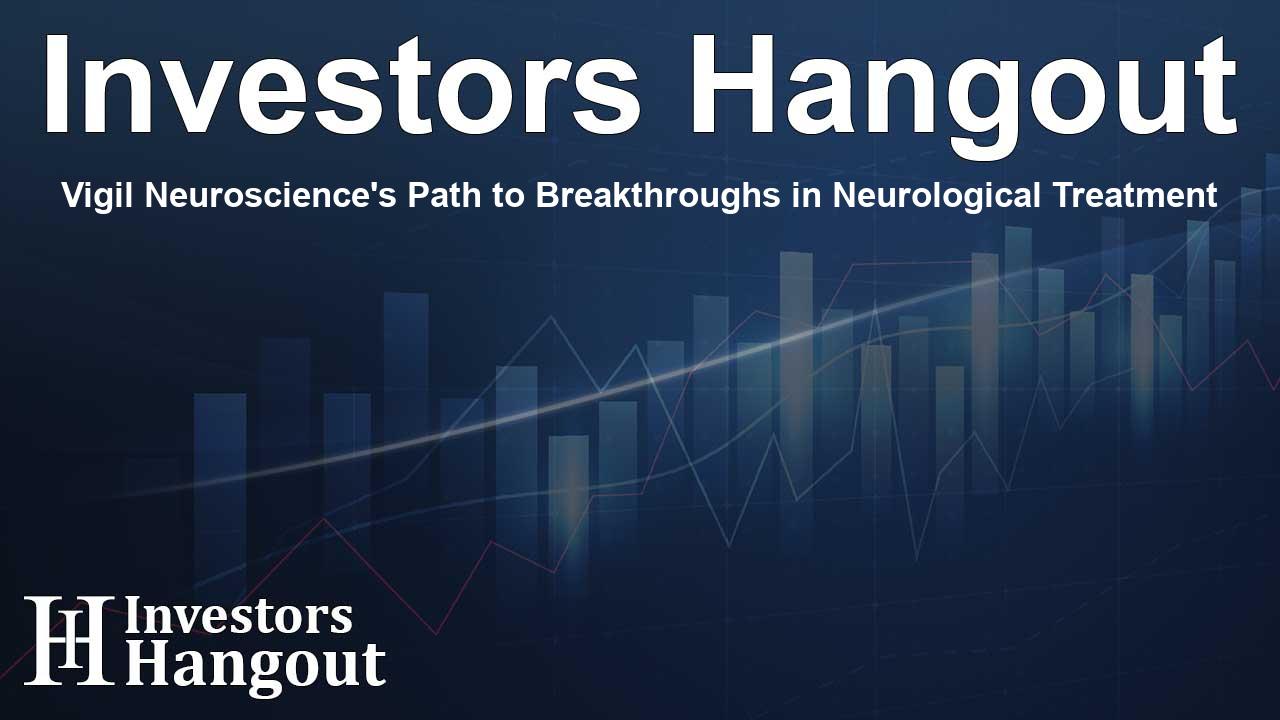Vigil Neuroscience's Path to Breakthroughs in Neurological Treatment

Vigil Neuroscience's Path to Breakthroughs in Neurological Treatment
On track to deliver critical data from its innovative research, Vigil Neuroscience is set to report findings from its Phase 1 clinical trial evaluating VG-3927 for Alzheimer's disease in early 2025. The company is also gearing up for further milestones next year, showcasing a strong commitment to advancing therapeutic options for neurodegenerative diseases.
2024 proved to be a pivotal year for Vigil Neuroscience (NASDAQ: VIGL), evident from the company's operational progress and strategic initiatives. The leadership, led by President and CEO Ivana Magov?evi?-Liebisch, emphasizes the importance of strong science and commitment in navigating these ventures. The successful integration of a $40 million strategic investment from a global healthcare leader enabled significant strides in its clinical trial progress.
Highlights from 2024 Achievements
Vigil's clinical programs, particularly the two TREM2 agonist projects, VG-3927 and iluzanebart, are on an upward trajectory. The company has targeted Alzheimer’s and adult-onset leukoencephalopathy with axonal spheroids and pigmented glia (ALSP), exhibiting a strong pipeline of innovative treatments.
Iluzanebart: A Promising Monoclonal Antibody Agonist
Vigil announced a significant update to its clinical development strategy following a collaborative meeting with the U.S. Food and Drug Administration (FDA), indicating openness towards an accelerated approval pathway for iluzanebart in treating ALSP. This strategic insight allows Vigil to aim for swift access to effective therapies for patients in need.
The company's IGNITE Phase 2 clinical trial has impressively exceeded enrollment expectations, enrolling 20 participants compared to the planned 15. Moreover, the ILLUMINATE study has vastly expanded its participant base beyond 50, providing valuable data that enhances understanding of ALSP and importantly, the biomarkers related to its progression.
VG-3927: A Next-Gen Small Molecule Approach
The VG-3927 program reported promising interim data from its ongoing Phase 1 clinical trial, highlighting positive findings related to safety and pharmacokinetics in healthy volunteers. Aiming to address Alzheimer’s disease specifically, this trial includes participants with TREM2 variants, guiding researchers to explore the therapeutic potentials of this novel small molecule.
Earlier this year, Vigil was granted approval to continue its Phase 1 clinical trial without clinical holds, indicating regulatory confidence in the program’s safety and efficacy. Presentations at significant conferences further illuminated the unique mechanisms of VG-3927, emphasizing its brain-penetrating properties and its role as a positive allosteric modulator, thereby enhancing its neuroprotective effects.
2025: A Year of Anticipated Progress
As Vigil looks ahead to the upcoming year, it has set its sights on crucial milestones. The company plans to share pivotal data outcomes from the VG-3927 Phase 1 study, expected in the first quarter of 2025. This data will encompass various cohorts, including those with Alzheimer's, potentially informing the next stages of development.
Final Analyses and Future Significance
In addition to VG-3927’s promising advancements, the final analysis of the IGNITE Phase 2 clinical trial of iluzanebart is planned for the second quarter of next year. This study’s results will be crucial, as Vigil aims to pursue the accelerated approval pathway and share findings that could be transformative for ALSP patients.
About Vigil Neuroscience
Vigil Neuroscience operates at the forefront of biotechnology, focusing its mission on developing transformative treatments for both common and rare neurodegenerative conditions, primarily through the restoration of microglial function within the brain. The company's innovative monoclonal antibody therapy, iluzanebart, specifically targets TREM2, addressing critical diseases with significant unmet needs. Simultaneously, VG-3927 represents a new frontier in small molecule therapies tailored for diseases tied to microglial dysfunction, showcasing Vigil’s commitment to research and patient care.
Frequently Asked Questions
What is the focus of Vigil Neuroscience's research?
Vigil Neuroscience primarily focuses on developing treatments for neurodegenerative diseases, including Alzheimer's disease and ALSP, by enhancing the role of microglia, the brain's immune cells.
What are the key milestones expected in 2025?
Vigil plans to report data from its Phase 1 trial of VG-3927 and complete the final analysis of the IGNITE Phase 2 trial for iluzanebart in 2025.
How does iluzanebart work?
Iluzanebart is a monoclonal antibody that acts as a TREM2 agonist, potentially altering the progression of diseases like ALSP by enhancing microglial activity.
What significant investment has Vigil received recently?
Vigil secured a $40 million strategic investment from Sanofi to support ongoing research and development of its clinical programs.
Who leads Vigil Neuroscience?
The company is led by Ivana Magov?evi?-Liebisch, Ph.D., J.D., who serves as the President and Chief Executive Officer, driving its strategic initiatives and clinical programs.
About Investors Hangout
Investors Hangout is a leading online stock forum for financial discussion and learning, offering a wide range of free tools and resources. It draws in traders of all levels, who exchange market knowledge, investigate trading tactics, and keep an eye on industry developments in real time. Featuring financial articles, stock message boards, quotes, charts, company profiles, and live news updates. Through cooperative learning and a wealth of informational resources, it helps users from novices creating their first portfolios to experts honing their techniques. Join Investors Hangout today: https://investorshangout.com/
Disclaimer: The content of this article is solely for general informational purposes only; it does not represent legal, financial, or investment advice. Investors Hangout does not offer financial advice; the author is not a licensed financial advisor. Consult a qualified advisor before making any financial or investment decisions based on this article. The author's interpretation of publicly available data shapes the opinions presented here; as a result, they should not be taken as advice to purchase, sell, or hold any securities mentioned or any other investments. The author does not guarantee the accuracy, completeness, or timeliness of any material, providing it "as is." Information and market conditions may change; past performance is not indicative of future outcomes. If any of the material offered here is inaccurate, please contact us for corrections.